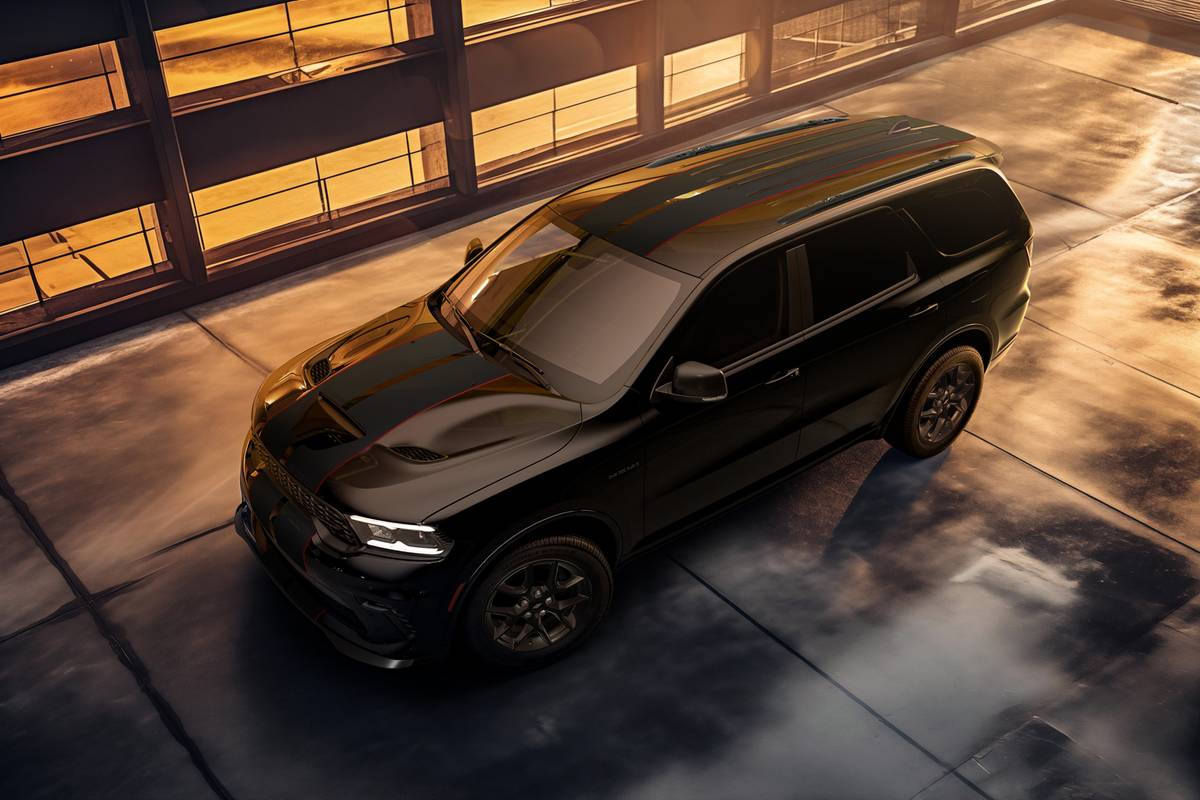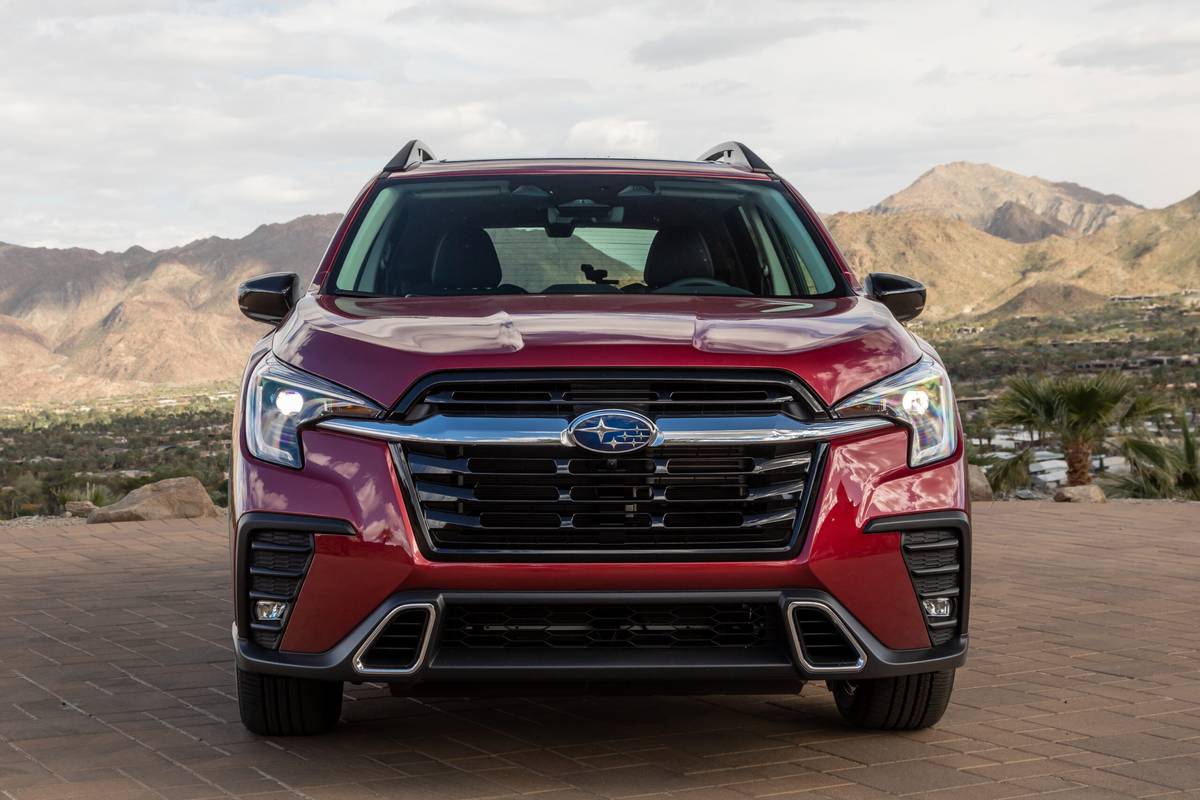Orlando Sentinel's view
When an automaker builds a car as striking as the new Riviera, it’s very tempting to brush aside a few minor shortcomings.
Don’t get me wrong. I am very impressed with the new Riviera, a ’95 model now available at dealerships. The car’s styling is bold, original and elegant. For the most part, the engineering is first-rate. And the new Riv is a high-value, high-quality automobile.
Buick’sGeneral Manager Ed Mertz has kept a very close watch on the production line this summer to ensure that the cars are being built properly and delivered to customers with no problems.
I have no complaints with the styling or assembly, but after spending a week behind the wheel, I feel as if Buick could have done a bit more to broaden the Riviera’s appeal.
Buick says it wants to attract a younger, more upscale group of buyers, such as aging baby boomers who, perhaps, would otherwise buy a Lexus, Infiniti or Acura.
With its sexy, curvaceous body, I can see the new Riviera making younger heads turn. This car has a svelte, expensive look to it.
But I wonder how many of those potential younger buyers will still be impressed after a closer look and a test drive. That’s when they’ll discover Buick’s typical soft ride and an interior that seems filled with acres of plastic.
In my view, two improvements would complete the package. First, some real wood trim on the dash, door panels and console would provide some needed class in an otherwise terrific interior.
And second, a Gran Sport suspension option – for years a Buick trademark, but unavailable in the Riviera – would give younger buyers the type of handling performance available in the imports.
PERFORMANCE
Because the car looks so sleek, one is likely to think that the Riviera is a fast car. That’s not necessarily the case.
By no means is the Riviera slow. Its present power plant provides respectable but somewhat restrained acceleration from a stop. Buick says the supercharged Riv will go from0-to-60 mph in 8.5 seconds. And there is adequate highway passing power.
For now, the engine in the Riviera is Buick’s supercharged 3800 V-6, a smooth and quiet 225-horsepower cast-iron power plant.
The supercharged engine emits a barely audible turbine-like sound as it winds up. The supercharger forces a denser mixture of fuel and air into the engine to increase power. Unlike a turbocharger, which is operated by exhaust gases, a supercharger is mechanically driven.
Later in the model year a highly revised 3800, called the Series II, is scheduled to replace the current engine.
Thenew base V-6 engine will develop about 220-horsepower, while the supercharged version of the Series II will put out close to 250 horsepower, according to Buick.
The additional power should help make the 3,700-pound Riviera more responsive.
Whatever the Riv lacks in tire-spinning acceleration, it makes up for in smoothness, refinement and fuel eco nomy.
On a long road trip, the Riviera used a gallon of unleaded premium every 27 miles – and that was with three people aboard and the air conditioner running. In the city, I logged 18 miles per gallon.
For all practical purposes, the automatic transmission goes about its business unnoticed. The shifts are exceptionally smooth and well-timed. The Riviera is a front-wheel drive car, but the power is delivered with balanced excellence. There’s no trace of torque steer – a pulling to the left or right upon hard acceleration.
However, there is a part of the drivetrain that Buick engineers already are working to make an improvement. In first gear in stop-and-go driving (such as a slow-moving traffic jam) the drivetrain tends to judder enough to make it feel as if something is loose underneath the hood. I noticed this in two Riviera test cars.
Perhaps a better engine-mounting system or a change in the first gear ratio would solve the problem. Fortunately, most ofu don’t drive in first gear very much, and the problem is not very noticeable. Yet in a car of the Riviera’s price and status, one doesn’t expect to find such rough edges.
HANDLING
Though sporty and muscular-looking, the Riviera is a luxury coupe. The ride, therefore, is fairly soft.
But that’s not too say that the Riv can’t take a curve. Generally, it does so with ease – unless you push it hard, such as taking a long, sweeping curve at 50 mph. That’s when the body seems to pitch and roll, and the tires let out squeals of protest.
I like a taut and firm ride in a coupe. But it seems to me that the ride and handling of the Riviera is not much different from that of one of Buick’s sedans, such as the Park Avenue Ultra or the LeSabre.
On the plus side, the soft ride likely will appeal to traditional Buick buyers. Like other Buicks, the Riviera is an exceptionally stable and quiet car in everyday driving.
The four-wheel independent suspension system does a great job of isolating the driver and passengers from most of the effects of bad roads.
Riviera is outfitted with a magnetic-hydraulic variable speed rack-and-pinion steering system that makes the car turn crisply, smoothly and predictably. The four-wheel power-assisted anti-lock disc brakes are strong.
Our test car came with traction control, a device that prevents the front wheels from spinning on slick pavement.
FIT AND FINISH
TheRiviera’s interior seems inconsistent.
On the one hand, when you sit in the attractive, comfortable leather bucket seats you can’t help but notice the first-rate appointments – such as the thick carpet and padded headliner. You know that Buick designers aimed to build a durable high-quality automobile.
It is almost as if an accountant stepped in and wouldn’t let them finish the job for fear of increasing the price too much.
So on the other hand, you see the dash, door panels and console, which contain bland areas of plastic surfaces.
There is an area on the lower portion of the dash that’s just begging for a strip of wood. I can envision a highly polished plank of burled walnut running from the switch area of the door panels to the lower portion of the dash. It’s easy to see how such a piece of wood would break up the visual monotony of interior and add a warm ambience.
One passenger commented that the Riviera logo on the dash looked like a cheap refrigerator magnet. I agree.
That said, I found the big, round gauges to be terrific looking and easy to read.
Our test car came with a powerful AM/FM stereo cassette and CD player. The unit could be operated with steering wheel-mounted controls.
Window and door-lock switches, as well as front-passenger controls for the air-conditioning system, were simply designed and placed midway up on the door panel for easy use.
Front and rear seat comfort is excellent. Buick’s special cadre of seat engineers h ave turned in their best work to date with the Riviera’s seats. The seats are soft yet supportive. I made several long trips and felt no traces of discomfort or fatigue.
Few cars I’ve driven this year have attracted as much attention as the dark blue test car. This Riviera, despite a few inconsistencies, has the potential to be a classic.
Specifications: Base price: $27,632 EPA rating: 17 mpg city/27 mpg highway Price as tested: $31,433 Incentives: None
Truett’s tip: The new Riviera just may be the most gorgeous car Buick has built since the first Riviera came out in 1963. This is the first Buick in many years that likely will appeal to young import-oriented buyers.
Latest news



